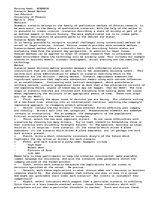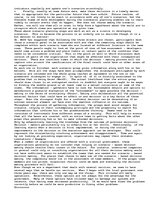-
Scenaro Method
There are countless times in which the decision - making process will not capture into account the ramifications of the final result could have on other areas of an organization.
As each one is finished, each scenario group gives information along with his or her beliefs. Once all the steps have been accomplished, the strategies anticipated by each scenario are reviewed and the whole group reaches an agreement on the one or two preeminent strategies to engage in. In spite of, if it is directly associated to the problem that is being faced (Werff). The actual likelihood that the entire group should draw closer to an undisputed verdict is doubtful but everyone ought to be eager to finding the middle ground or at least come to a mutual concurrence on some of the items. The information - gatherers have to look for foreseeable details and options to manufacture a pratacle evaluation of the "unknowable" to make possible the decision - making in the faces of uncertainty (Russo). Taking into deliberation all the potential external factors that could have an effect on and decision is a key factor of those steps. Even the strongest fight for a confident decision can be devastating if an unknown external element can have even the smallest influence on its outcome.
Throughout the process of gathering information, the groups must avoid dangers for instance, relying on their contemporary principle and the propensity to search for information that confirms his or her predetermined thinking. Teams need to be consisted of individuals from different areas of a society. This will help to ensure that all the bases are covered, with an entire team is getting facts about the other areas thus permitting him or her to make informed decisions.
…



